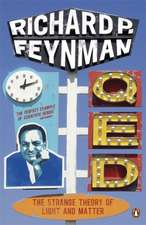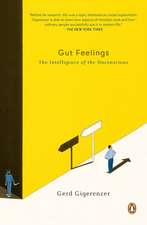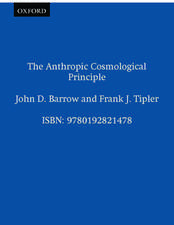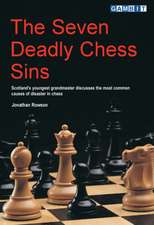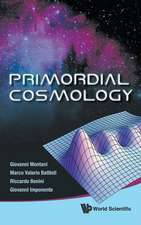The Hidden Reality: Parallel Universes and the Deep Laws of the Cosmos
Autor Brian Greeneen Limba Engleză Paperback – feb 2012
There was a time when 'universe' meant all there is. Everything. Yet, as physicist Brian Greene's extraordinary book shows, ours may be just one universe among many, like endless reflections in a mirror.
He takes us on a captivating exploration of parallel worlds - from a multiverse where an infinite number of your doppelgangers are reading this sentence, to vast oceans of bubble universes and even multiverses made of mathematics - showing just how much of reality's true nature may be hidden within them.
'If extraterrestrials land tomorrow and demand to know what the human mind is capable of accomplishing ... hand them a copy of this book'
The New York Times Book Review
'A writer of exceptional clarity and charm ... every chapter opens level after level of previously unimaginable, mind-expanding realities'
Oliver Sacks
'The book serves well as an introduction to the multiverse and will open up many people's eyes'
John Gribbin
Brian Greeneis well known to many fans as a populariser of theoretical physics. He is the author of the bestselling books about string theory,The Elegant Universe, which was a finalist for the Pulitzer Prize for nonfiction,The Fabric of the Cosmos, andThe Hidden Reality. Educated at Harvard and Oxford, he has taught at both Harvard and Cornell and has been Professor of Physics and Mathematics at Columbia University since 1996.
| Toate formatele și edițiile | Preț | Express |
|---|---|---|
| Paperback (2) | 70.30 lei 3-5 săpt. | +11.56 lei 7-13 zile |
| Penguin Books – feb 2012 | 70.30 lei 3-5 săpt. | +11.56 lei 7-13 zile |
| VINTAGE BOOKS – 31 oct 2011 | 115.09 lei 3-5 săpt. | +34.64 lei 7-13 zile |
Preț: 70.30 lei
Nou
Puncte Express: 105
Preț estimativ în valută:
13.45€ • 14.04$ • 11.13£
13.45€ • 14.04$ • 11.13£
Carte disponibilă
Livrare economică 14-28 martie
Livrare express 28 februarie-06 martie pentru 21.55 lei
Preluare comenzi: 021 569.72.76
Specificații
ISBN-13: 9780141029818
ISBN-10: 0141029811
Pagini: 384
Dimensiuni: 129 x 198 x 22 mm
Greutate: 0.28 kg
Editura: Penguin Books
Colecția Penguin
Locul publicării:London, United Kingdom
ISBN-10: 0141029811
Pagini: 384
Dimensiuni: 129 x 198 x 22 mm
Greutate: 0.28 kg
Editura: Penguin Books
Colecția Penguin
Locul publicării:London, United Kingdom
Notă biografică
Brian
Greene
is
well
known
to
many
fans
as
a
populariser
of
theoretical
physics.
He
is
the
author
of
the
bestselling
books
about
string
theory,The
Elegant
Universe,which
was
a
finalist
for
the
Pulitzer
Prize
for
nonfiction
andThe
Fabric
of
the
Cosmos.Educated
at
Harvard
and
Oxford,
he
has
taught
at
both
Harvard
and
Cornell
and
has
been
Professor
of
Physics
and
Mathematics
at
Columbia
University
since
1996.
Recenzii
Brian
Greene's
bookThe
Hidden
Realityis
a
tour
de
force
of
one
of
the
most
controversial
areas
of
modern
science
-
the
possibility
that
there
are
multiple
universes...
Greene's
ability
as
a
populariser
has
matured
with
each
new
publication
and
this
latest
offering
is
his
best
yet
Exciting and rewarding ... captures and engages the imagination ... Greene has a gift for elucidating big ideas
If extraterrestrials landed tomorrow and demanded to know what the human mind is capable of accomplishing, we could do worse than to hand them a copy of this book
The book serves well as an introduction to the multiverse and will open up many people's eyes
Every chapter opens level after level of previously unimaginable, mind-expanding realities
Exciting and rewarding ... captures and engages the imagination ... Greene has a gift for elucidating big ideas
If extraterrestrials landed tomorrow and demanded to know what the human mind is capable of accomplishing, we could do worse than to hand them a copy of this book
The book serves well as an introduction to the multiverse and will open up many people's eyes
Every chapter opens level after level of previously unimaginable, mind-expanding realities
Extras
Chapter 1
The Bounds of Reality
On Parallel Worlds
If, when I was growing up, my room had been adorned with only a single mirror, my childhood daydreams might have been very different. But it had two. And each morning when I opened the closet to get my clothes, the one built into its door aligned with the one on the wall, creating a seemingly endless series of reflections of anything situated between them. It was mesmerizing. I delighted in seeing image after image populating the parallel glass planes, extending back as far as the eye could discern. All the reflections seemed to move in unison—but that, I knew, was a mere limitation of human perception; at a young age I had learned of light’s finite speed. So in my mind’s eye, I would watch the light’s round-trip journeys. The bob of my head, the sweep of my arm silently echoed between the mirrors, each reflected image nudging the next. Sometimes I would imagine an irreverent me way down the line who refused to fall into place, disrupting the steady progression and creating a new reality that informed the ones that followed. During lulls at school, I would sometimes think about the light I had shed that morning, still endlessly bouncing between the mirrors, and I’d join one of my reflected selves, entering an imaginary parallel world constructed of light and driven by fantasy. It was a safe way to break the rules.
To be sure, reflected images don’t have minds of their own. But these youthful flights of fancy, with their imagined parallel realities, resonate with an increasingly prominent theme in modern science—the possibility of worlds lying beyond the one we know. This book is an exploration of such possibilities, a considered journey through the science of parallel universes.
Universe and Universes
There was a time when “universe” meant “all there is.” Everything. The whole shebang. The notion of more than one universe, more than one everything, would seemingly be a contradiction in terms. Yet a range of theoretical developments has gradually qualified the interpretation of “universe.” To a physicist, the word’s meaning now largely depends on context. Sometimes “universe” still connotes absolutely everything. Sometimes it refers only to those parts of everything that someone such as you or I could, in principle, have access to. Sometimes it’s applied to separate realms, ones that are partly or fully, temporarily or permanently, inaccessible to us; in this sense, the word relegates ours to membership in a large, perhaps infinitely large, collection.
With its hegemony diminished, “universe” has given way to other terms introduced to capture the wider canvas on which the totality of reality may be painted. Parallel worlds or parallel universes or multiple universes or alternate universes or the metaverse, megaverse, or multiverse—they’re all synonymous and they’re all among the words used to embrace not just our universe but a spectrum of others that may be out there.
You’ll notice that the terms are somewhat vague. What exactly constitutes a world or a universe? What criteria distinguish realms that are distinct parts of a single universe from those classified as universes of their own? Perhaps someday our understanding of multiple universes will mature sufficiently for us to have precise answers to these questions. For now, we’ll use the approach famously applied by Justice Potter Stewart in attempting to define pornography. While the U.S. Supreme Court wrestled mightily to delineate a standard, Stewart declared simply and forthrightly, “I know it when I see it.”
In the end, labeling one realm or another a parallel universe is merely a question of language. What matters, what’s at the heart of the subject, is whether there exist realms that challenge convention by suggesting that what we’ve long thought to be the universe is only one component of a far grander, perhaps far stranger, and mostly hidden reality.
During the last half century, science has provided ample ways in which this possibility might be realized.
Varieties of Parallel Universes
A striking fact (it’s in part what propelled me to write this book) is that many of the major developments in fundamental theoretical physics— relativistic physics, quantum physics, cosmological physics, unified physics, computational physics—have led us to consider one or another variety of parallel universe. Indeed, the chapters that follow trace a narrative arc through nine variations on the multiverse theme. Each envisions our universe as part of an unexpectedly larger whole, but the complexion of that whole and the nature of the member universes differ sharply among them. In some, the parallel universes are separated from us by enormous stretches of space or time; in others, they’re hovering millimeters away; in others still, the very notion of their location proves parochial, devoid of meaning. A similar range of possibility is manifest in the laws governing the parallel universes. In some, the laws are the same as in ours; in others, they appear different but have shared a heritage; in others still, the laws are of a form and structure unlike anything we’ve ever encountered. It’s at once humbling and stirring to imagine just how expansive reality may be.
Some of the earliest scientific forays into parallel worlds were initiated in the 1950s by researchers puzzling over aspects of quantum mechanics, a theory developed to explain phenomena taking place in the microscopic realm of atoms and subatomic particles. Quantum mechanics broke the mold of the previous framework, classical mechanics, by establishing that the predictions of science are necessarily probabilistic. We can predict the odds of attaining one outcome, we can predict the odds of another, but we generally can’t predict which will actually happen. This well-known departure from hundreds of years of scientific thought is surprising enough. But there’s a more confounding aspect of quantum theory that receives less attention. After decades of closely studying quantum mechanics, and after having accumulated a wealth of data confirming its probabilistic predictions, no one has been able to explain why only one of the many possible outcomes in any given situation actually happens. When we do experiments, when we examine the world, we all agree that we encounter a single definite reality. Yet, more than a century after the quantum revolution began, there is no consensus among the world’s physicists as to how this basic fact is compatible with the theory’s mathematical expression.
Over the years, this substantial gap in understanding has inspired many creative proposals, but the most startling was among the first. Maybe, that early suggestion went, the familiar notion that any given experiment has one and only one outcome is flawed. The mathematics underlying quantum mechanics—or at least, one perspective on the math— suggests that all possible outcomes happen, each inhabiting its own separate universe. If a quantum calculation predicts that a particle might be here, or it might be there, then in one universe it is here, and in another it is there. And in each such universe, there’s a copy of you witnessing one or the other outcome, thinking—incorrectly—that your reality is the only reality. When you realize that quantum mechanics underlies all physical processes, from the fusing of atoms in the sun to the neural firing that constitutes the stuff of thought, the far-reaching implications of the proposal become apparent. It says that there’s no such thing as a road untraveled. Yet each such road— each reality—is hidden from all others.
This tantalizing Many Worlds approach to quantum mechanics has attracted much interest in recent decades. But investigations have shown that it’s a subtle and thorny framework (as we will discuss in Chapter 8); so, even today, after more than half a century of vetting, the proposal remains controversial. Some quantum practitioners argue that it has already been proven correct, while others claim just as assuredly that the mathematical underpinnings don’t hold together.
What is beyond doubt is that this early version of parallel universes resonated with themes of separate lands or alternative histories that were being explored in literature, television, and film, creative forays that continue today. (My favorites since childhood include The Wizard of Oz, It’s a Wonderful Life, the Star Trek episode “The City on the Edge of Forever,” and, more recently, Sliding Doors and Run Lola Run). Collectively, these and many other works of popular culture have helped integrate the concept of parallel realities into the zeitgeist and are responsible for fueling much public fascination with the topic. But the mathematics of quantum mechanics is only one of numerous ways that a conception of parallel universes emerges from modern physics. In fact, it won’t be the first I’ll discuss.
Instead, in Chapter 2, I’ll begin with a different route to parallel universes, perhaps the simplest route of all. We’ll see that if space extends infinitely far—a proposition that is consistent with all observations and that is part of the cosmological model favored by many physicists and astronomers—then there must be realms out there (likely way out there) where copies of you and me and everything else are enjoying alternate versions of the reality we experience here. Chapter 3 will journey deeper into cosmology: the inflationary theory, an approach that posits an enormous burst of superfast spatial expansion during the universe’s earliest moments, generates its own version of parallel worlds. If inflation is correct, as the most refined astronomical observations suggest, the burst that created our region of space may not have been unique. Instead, right now, inflationary expansion in distant realms may be spawning universe upon universe and may continue to do so for all eternity. What’s more, each of these ballooning universes has its own infinite spatial expanse, and hence contains infinitely many of the parallel worlds explored in Chapter 2.
In Chapter 4, our trek turns to string theory. After a brief review of the basics, I’ll provide a status report on this approach to unifying all of nature’s laws. With that overview, in Chapters 5 and 6 we’ll explore recent developments in string theory that suggest three new kinds of parallel universes. One is string theory’s braneworld scenario, which posits that our universe is one of potentially numerous “slabs” floating in a higher-dimensional space, much like a slice of bread within a grander cosmic loaf. If we’re lucky, it’s an approach that may provide an observable signature at the Large Hadron Collider in Geneva, Switzerland, in the not too distant future. A second variety involves braneworlds that slam into one another, wiping away all they contain and initiating a new, fiery big-bang-like beginning in each. As if two giant hands were clapping, this could happen over and over—branes might collide, bounce apart, attract each other gravitationally, and then collide again, a cyclic process generating universes that are parallel not in space but in time. The third scenario is the string theory “landscape,” founded on the enormous number of possible shapes and sizes for the theory’s required extra spatial dimensions. We’ll see that, when joined with the Inflationary Multiverse, the string landscape suggests a vast collection of universes in which every possible form for the extra dimensions is realized.
In Chapter 6, we’ll focus on how these considerations illuminate one of the most surprising observational results of the last century: space appears to be filled with a uniform diffuse energy, which may well be a version of Einstein’s infamous cosmological constant. Indeed, this observation has inspired much of the recent research on parallel universes, and it’s responsible for one of the most heated debates in decades on the nature of acceptable scientific explanations. Chapter 7 extends this theme by asking, more generally, whether consideration of hidden universes beyond our own can be rightly understood as a branch of science. Can we test these ideas? If we invoke them to solve outstanding problems, have we made progress, or have we merely swept the problems under a conveniently inaccessible cosmic rug? I’ve sought to lay bare the essentials of the clashing perspectives, while ultimately emphasizing my own view that, under certain specific conditions, parallel universes fall unequivocally within the purview of science.
Quantum mechanics, with its Many Worlds version of parallel universes, is the subject of Chapter 8. I’ll briefly remind you of the essential features of quantum mechanics, then focus on the formidable problem just referred to: how to extract definite outcomes from a theory whose basic paradigm allows for mutually contradictory realities to coexist in an amorphous, but mathematically precise, probabilistic haze. I’ll carefully lead you through the reasoning that, in seeking an answer, proposes anchoring quantum reality in its own profusion of parallel worlds.
Chapter 9 takes us yet further into quantum reality, leading to what I consider the strangest version of all parallel universes proposals. It’s a proposal that emerged gradually over thirty years of theoretical studies spearheaded by luminaries including Stephen Hawking, Jacob Bekenstein, Gerardt Hooft, and Leonard Susskind on the quantum properties of black holes. The work culminated in the last decade, with a stunning result from string theory, and it suggests, remarkably, that all we experience is nothing but a holographic projection of processes taking place on some distant surface that surrounds us. You can pinch yourself, and what you feel will be real, but it mirrors a parallel process taking place in a different, distant reality.
Finally, in Chapter 10 the yet more fanciful possibility of artificial
universes takes center stage. The question of whether the laws of physics give us the capacity to create new universes will be our first order of
business. We’ll then turn to universes created not with hardware but
with software—universes that might be simulated on a superadvanced computer—and investigate whether we can be confident that we’re not now living in someone or something else’s simulation. This will lead to the most unrestrained parallel universe proposal, originating in the philosophical community: that every possible reality is realized somewhere in what’s surely the grandest of all multiverses. The discussion naturally unfolds into an inquiry about the role mathematics has in unraveling the mysteries of science and, ultimately, our ability, or lack thereof, to gain an ever-deeper understanding of the expanse of reality.
The Cosmic Order
The subject of parallel universes is highly speculative. No experiment or observation has established that any version of the idea is realized in nature. So my point in writing this book is not to convince you that we’re part of a multiverse. I’m not convinced—and, speaking generally, no one should be convinced—of anything not supported by hard data. That said, I find it both curious and compelling that numerous developments in physics, if followed sufficiently far, bump into some variation on the parallel universe theme. Of particular note, it’s not that physicists are standing ready, multiverse nets in their hands, seeking to snare any passing theory that might be slotted, however awkwardly, into a parallel- universe paradigm. Rather, all of the parallel-universe proposals that we will take seriously emerge unbidden from the mathematics of theories developed to explain conventional data and observations.
My intention, then, is to lay out clearly and concisely the intellectual steps and the chain of theoretical insights that have led physicists, from a range of perspectives, to consider the possibility that ours is one of many universes. I want you to get a sense of how modern scientific investigations— not untethered fantasies like the catoptric musings of my boyhood— naturally suggest this astounding possibility. I want to show you how certain otherwise confounding observations can become eminently understandable within one or another parallel-universe framework; at the same time, I’ll describe the critical unresolved questions that have, as yet, kept this explanatory approach from being fully realized. My aim is that when you leave this book, your sense of what might be— your perspective on how the boundaries of reality may one day be redrawn by scientific developments now under way— will be far more rich and vivid.
Some people recoil at the notion of parallel worlds; as they see it, if we are part of a multiverse, our place and importance in the cosmos are marginalized. My take is different. I don’t find merit in measuring significance by our relative abundance. Rather, what’s gratifying about being human, what’s exciting about being part of the scientific enterprise, is our ability to use analytical thought to bridge vast distances, journeying to outer and inner space and, if some of the ideas we’ll encounter in this book prove correct, perhaps even beyond our universe. For me, it is the depth of our understanding, acquired from our lonely vantage point in the inky black stillness of a cold and forbidding cosmos, that reverberates across the expanse of reality and marks our arrival.
The Bounds of Reality
On Parallel Worlds
If, when I was growing up, my room had been adorned with only a single mirror, my childhood daydreams might have been very different. But it had two. And each morning when I opened the closet to get my clothes, the one built into its door aligned with the one on the wall, creating a seemingly endless series of reflections of anything situated between them. It was mesmerizing. I delighted in seeing image after image populating the parallel glass planes, extending back as far as the eye could discern. All the reflections seemed to move in unison—but that, I knew, was a mere limitation of human perception; at a young age I had learned of light’s finite speed. So in my mind’s eye, I would watch the light’s round-trip journeys. The bob of my head, the sweep of my arm silently echoed between the mirrors, each reflected image nudging the next. Sometimes I would imagine an irreverent me way down the line who refused to fall into place, disrupting the steady progression and creating a new reality that informed the ones that followed. During lulls at school, I would sometimes think about the light I had shed that morning, still endlessly bouncing between the mirrors, and I’d join one of my reflected selves, entering an imaginary parallel world constructed of light and driven by fantasy. It was a safe way to break the rules.
To be sure, reflected images don’t have minds of their own. But these youthful flights of fancy, with their imagined parallel realities, resonate with an increasingly prominent theme in modern science—the possibility of worlds lying beyond the one we know. This book is an exploration of such possibilities, a considered journey through the science of parallel universes.
Universe and Universes
There was a time when “universe” meant “all there is.” Everything. The whole shebang. The notion of more than one universe, more than one everything, would seemingly be a contradiction in terms. Yet a range of theoretical developments has gradually qualified the interpretation of “universe.” To a physicist, the word’s meaning now largely depends on context. Sometimes “universe” still connotes absolutely everything. Sometimes it refers only to those parts of everything that someone such as you or I could, in principle, have access to. Sometimes it’s applied to separate realms, ones that are partly or fully, temporarily or permanently, inaccessible to us; in this sense, the word relegates ours to membership in a large, perhaps infinitely large, collection.
With its hegemony diminished, “universe” has given way to other terms introduced to capture the wider canvas on which the totality of reality may be painted. Parallel worlds or parallel universes or multiple universes or alternate universes or the metaverse, megaverse, or multiverse—they’re all synonymous and they’re all among the words used to embrace not just our universe but a spectrum of others that may be out there.
You’ll notice that the terms are somewhat vague. What exactly constitutes a world or a universe? What criteria distinguish realms that are distinct parts of a single universe from those classified as universes of their own? Perhaps someday our understanding of multiple universes will mature sufficiently for us to have precise answers to these questions. For now, we’ll use the approach famously applied by Justice Potter Stewart in attempting to define pornography. While the U.S. Supreme Court wrestled mightily to delineate a standard, Stewart declared simply and forthrightly, “I know it when I see it.”
In the end, labeling one realm or another a parallel universe is merely a question of language. What matters, what’s at the heart of the subject, is whether there exist realms that challenge convention by suggesting that what we’ve long thought to be the universe is only one component of a far grander, perhaps far stranger, and mostly hidden reality.
During the last half century, science has provided ample ways in which this possibility might be realized.
Varieties of Parallel Universes
A striking fact (it’s in part what propelled me to write this book) is that many of the major developments in fundamental theoretical physics— relativistic physics, quantum physics, cosmological physics, unified physics, computational physics—have led us to consider one or another variety of parallel universe. Indeed, the chapters that follow trace a narrative arc through nine variations on the multiverse theme. Each envisions our universe as part of an unexpectedly larger whole, but the complexion of that whole and the nature of the member universes differ sharply among them. In some, the parallel universes are separated from us by enormous stretches of space or time; in others, they’re hovering millimeters away; in others still, the very notion of their location proves parochial, devoid of meaning. A similar range of possibility is manifest in the laws governing the parallel universes. In some, the laws are the same as in ours; in others, they appear different but have shared a heritage; in others still, the laws are of a form and structure unlike anything we’ve ever encountered. It’s at once humbling and stirring to imagine just how expansive reality may be.
Some of the earliest scientific forays into parallel worlds were initiated in the 1950s by researchers puzzling over aspects of quantum mechanics, a theory developed to explain phenomena taking place in the microscopic realm of atoms and subatomic particles. Quantum mechanics broke the mold of the previous framework, classical mechanics, by establishing that the predictions of science are necessarily probabilistic. We can predict the odds of attaining one outcome, we can predict the odds of another, but we generally can’t predict which will actually happen. This well-known departure from hundreds of years of scientific thought is surprising enough. But there’s a more confounding aspect of quantum theory that receives less attention. After decades of closely studying quantum mechanics, and after having accumulated a wealth of data confirming its probabilistic predictions, no one has been able to explain why only one of the many possible outcomes in any given situation actually happens. When we do experiments, when we examine the world, we all agree that we encounter a single definite reality. Yet, more than a century after the quantum revolution began, there is no consensus among the world’s physicists as to how this basic fact is compatible with the theory’s mathematical expression.
Over the years, this substantial gap in understanding has inspired many creative proposals, but the most startling was among the first. Maybe, that early suggestion went, the familiar notion that any given experiment has one and only one outcome is flawed. The mathematics underlying quantum mechanics—or at least, one perspective on the math— suggests that all possible outcomes happen, each inhabiting its own separate universe. If a quantum calculation predicts that a particle might be here, or it might be there, then in one universe it is here, and in another it is there. And in each such universe, there’s a copy of you witnessing one or the other outcome, thinking—incorrectly—that your reality is the only reality. When you realize that quantum mechanics underlies all physical processes, from the fusing of atoms in the sun to the neural firing that constitutes the stuff of thought, the far-reaching implications of the proposal become apparent. It says that there’s no such thing as a road untraveled. Yet each such road— each reality—is hidden from all others.
This tantalizing Many Worlds approach to quantum mechanics has attracted much interest in recent decades. But investigations have shown that it’s a subtle and thorny framework (as we will discuss in Chapter 8); so, even today, after more than half a century of vetting, the proposal remains controversial. Some quantum practitioners argue that it has already been proven correct, while others claim just as assuredly that the mathematical underpinnings don’t hold together.
What is beyond doubt is that this early version of parallel universes resonated with themes of separate lands or alternative histories that were being explored in literature, television, and film, creative forays that continue today. (My favorites since childhood include The Wizard of Oz, It’s a Wonderful Life, the Star Trek episode “The City on the Edge of Forever,” and, more recently, Sliding Doors and Run Lola Run). Collectively, these and many other works of popular culture have helped integrate the concept of parallel realities into the zeitgeist and are responsible for fueling much public fascination with the topic. But the mathematics of quantum mechanics is only one of numerous ways that a conception of parallel universes emerges from modern physics. In fact, it won’t be the first I’ll discuss.
Instead, in Chapter 2, I’ll begin with a different route to parallel universes, perhaps the simplest route of all. We’ll see that if space extends infinitely far—a proposition that is consistent with all observations and that is part of the cosmological model favored by many physicists and astronomers—then there must be realms out there (likely way out there) where copies of you and me and everything else are enjoying alternate versions of the reality we experience here. Chapter 3 will journey deeper into cosmology: the inflationary theory, an approach that posits an enormous burst of superfast spatial expansion during the universe’s earliest moments, generates its own version of parallel worlds. If inflation is correct, as the most refined astronomical observations suggest, the burst that created our region of space may not have been unique. Instead, right now, inflationary expansion in distant realms may be spawning universe upon universe and may continue to do so for all eternity. What’s more, each of these ballooning universes has its own infinite spatial expanse, and hence contains infinitely many of the parallel worlds explored in Chapter 2.
In Chapter 4, our trek turns to string theory. After a brief review of the basics, I’ll provide a status report on this approach to unifying all of nature’s laws. With that overview, in Chapters 5 and 6 we’ll explore recent developments in string theory that suggest three new kinds of parallel universes. One is string theory’s braneworld scenario, which posits that our universe is one of potentially numerous “slabs” floating in a higher-dimensional space, much like a slice of bread within a grander cosmic loaf. If we’re lucky, it’s an approach that may provide an observable signature at the Large Hadron Collider in Geneva, Switzerland, in the not too distant future. A second variety involves braneworlds that slam into one another, wiping away all they contain and initiating a new, fiery big-bang-like beginning in each. As if two giant hands were clapping, this could happen over and over—branes might collide, bounce apart, attract each other gravitationally, and then collide again, a cyclic process generating universes that are parallel not in space but in time. The third scenario is the string theory “landscape,” founded on the enormous number of possible shapes and sizes for the theory’s required extra spatial dimensions. We’ll see that, when joined with the Inflationary Multiverse, the string landscape suggests a vast collection of universes in which every possible form for the extra dimensions is realized.
In Chapter 6, we’ll focus on how these considerations illuminate one of the most surprising observational results of the last century: space appears to be filled with a uniform diffuse energy, which may well be a version of Einstein’s infamous cosmological constant. Indeed, this observation has inspired much of the recent research on parallel universes, and it’s responsible for one of the most heated debates in decades on the nature of acceptable scientific explanations. Chapter 7 extends this theme by asking, more generally, whether consideration of hidden universes beyond our own can be rightly understood as a branch of science. Can we test these ideas? If we invoke them to solve outstanding problems, have we made progress, or have we merely swept the problems under a conveniently inaccessible cosmic rug? I’ve sought to lay bare the essentials of the clashing perspectives, while ultimately emphasizing my own view that, under certain specific conditions, parallel universes fall unequivocally within the purview of science.
Quantum mechanics, with its Many Worlds version of parallel universes, is the subject of Chapter 8. I’ll briefly remind you of the essential features of quantum mechanics, then focus on the formidable problem just referred to: how to extract definite outcomes from a theory whose basic paradigm allows for mutually contradictory realities to coexist in an amorphous, but mathematically precise, probabilistic haze. I’ll carefully lead you through the reasoning that, in seeking an answer, proposes anchoring quantum reality in its own profusion of parallel worlds.
Chapter 9 takes us yet further into quantum reality, leading to what I consider the strangest version of all parallel universes proposals. It’s a proposal that emerged gradually over thirty years of theoretical studies spearheaded by luminaries including Stephen Hawking, Jacob Bekenstein, Gerardt Hooft, and Leonard Susskind on the quantum properties of black holes. The work culminated in the last decade, with a stunning result from string theory, and it suggests, remarkably, that all we experience is nothing but a holographic projection of processes taking place on some distant surface that surrounds us. You can pinch yourself, and what you feel will be real, but it mirrors a parallel process taking place in a different, distant reality.
Finally, in Chapter 10 the yet more fanciful possibility of artificial
universes takes center stage. The question of whether the laws of physics give us the capacity to create new universes will be our first order of
business. We’ll then turn to universes created not with hardware but
with software—universes that might be simulated on a superadvanced computer—and investigate whether we can be confident that we’re not now living in someone or something else’s simulation. This will lead to the most unrestrained parallel universe proposal, originating in the philosophical community: that every possible reality is realized somewhere in what’s surely the grandest of all multiverses. The discussion naturally unfolds into an inquiry about the role mathematics has in unraveling the mysteries of science and, ultimately, our ability, or lack thereof, to gain an ever-deeper understanding of the expanse of reality.
The Cosmic Order
The subject of parallel universes is highly speculative. No experiment or observation has established that any version of the idea is realized in nature. So my point in writing this book is not to convince you that we’re part of a multiverse. I’m not convinced—and, speaking generally, no one should be convinced—of anything not supported by hard data. That said, I find it both curious and compelling that numerous developments in physics, if followed sufficiently far, bump into some variation on the parallel universe theme. Of particular note, it’s not that physicists are standing ready, multiverse nets in their hands, seeking to snare any passing theory that might be slotted, however awkwardly, into a parallel- universe paradigm. Rather, all of the parallel-universe proposals that we will take seriously emerge unbidden from the mathematics of theories developed to explain conventional data and observations.
My intention, then, is to lay out clearly and concisely the intellectual steps and the chain of theoretical insights that have led physicists, from a range of perspectives, to consider the possibility that ours is one of many universes. I want you to get a sense of how modern scientific investigations— not untethered fantasies like the catoptric musings of my boyhood— naturally suggest this astounding possibility. I want to show you how certain otherwise confounding observations can become eminently understandable within one or another parallel-universe framework; at the same time, I’ll describe the critical unresolved questions that have, as yet, kept this explanatory approach from being fully realized. My aim is that when you leave this book, your sense of what might be— your perspective on how the boundaries of reality may one day be redrawn by scientific developments now under way— will be far more rich and vivid.
Some people recoil at the notion of parallel worlds; as they see it, if we are part of a multiverse, our place and importance in the cosmos are marginalized. My take is different. I don’t find merit in measuring significance by our relative abundance. Rather, what’s gratifying about being human, what’s exciting about being part of the scientific enterprise, is our ability to use analytical thought to bridge vast distances, journeying to outer and inner space and, if some of the ideas we’ll encounter in this book prove correct, perhaps even beyond our universe. For me, it is the depth of our understanding, acquired from our lonely vantage point in the inky black stillness of a cold and forbidding cosmos, that reverberates across the expanse of reality and marks our arrival.
Descriere
Descriere de la o altă ediție sau format:
In recent years, discoveries in physics and cosmology have led a number of scientists to conclude that our universe may be one among many. With crystal-clear prose and inspired use of analogy, Greene shows how a range of different "multiverse" proposals emerges from theories developed to explain the most refined observations of both subatomic particles and the dark depths of space.
In recent years, discoveries in physics and cosmology have led a number of scientists to conclude that our universe may be one among many. With crystal-clear prose and inspired use of analogy, Greene shows how a range of different "multiverse" proposals emerges from theories developed to explain the most refined observations of both subatomic particles and the dark depths of space.





